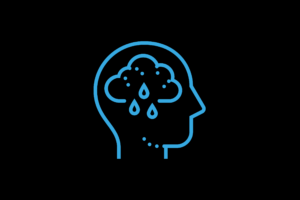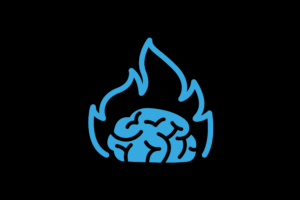Our brain is divided into different areas – each different area does a different job.
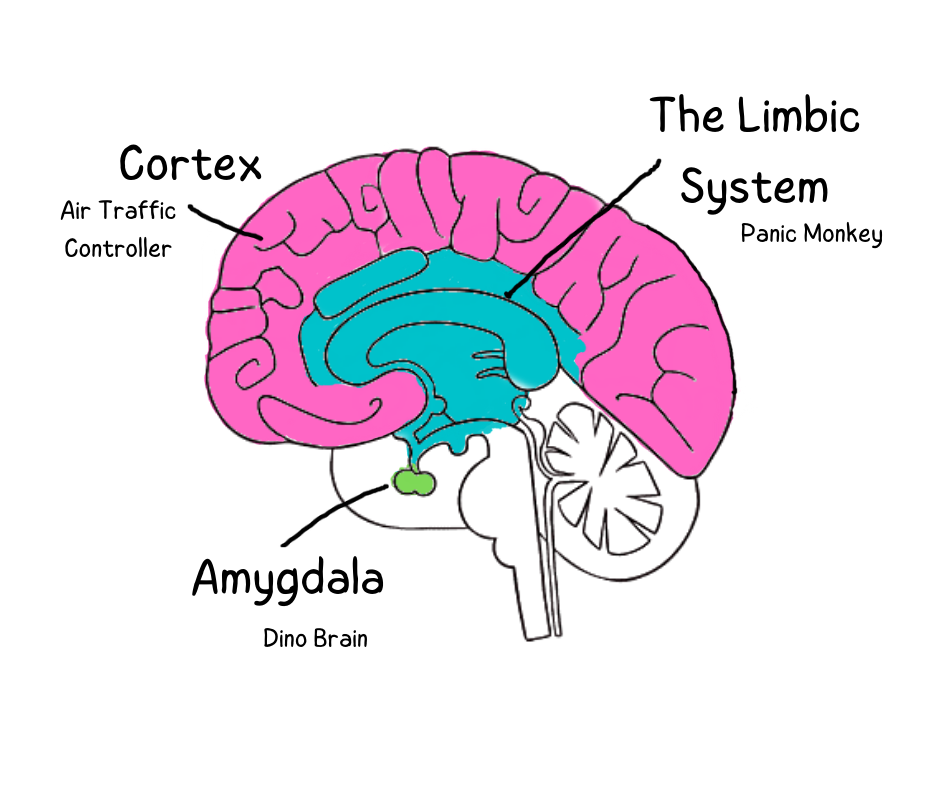
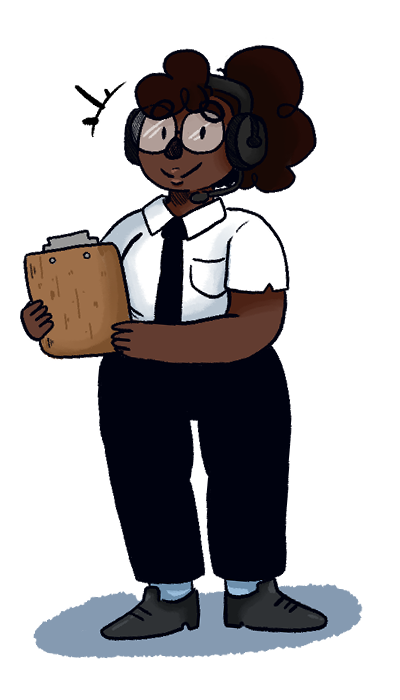
The Cortex – this is our ‘thinking’ brain which handles our processing and decision making – I like to think of it as an Air Traffic Controller, watching all the information screens, deciding on the best course of action and directing the body how to respond.
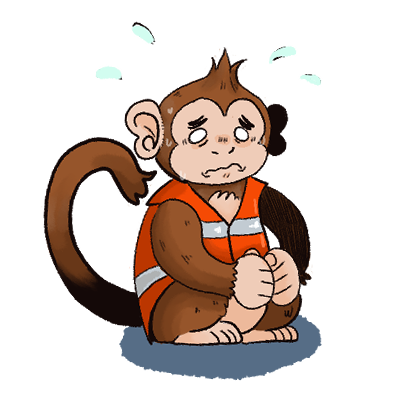
The Limbic System – I call this my Panic Monkey – this is a very active part of the brain when you’re autistic. Panic Monkey is our Health and Safety Officer. Anything that could possibly cause harm or risk causes them to worry.
It’s their job to look out for threats and to take protective action. If it isn’t urgent then Panic Monkey may work with the Air Traffic Controller and use tried and trusted defence routines that have worked in the past. If it is urgent or the cortex – Air Traffic Controller – is overloaded, overwhelmed and curled up whimpering in a corner – then Panic Monkey will get Dino Brain to take charge.
Dino Brain is a specialist – it has one task – to stop you from dying. Unfortunately it only trusts Panic Monkey and can’t judge a threat situation, but Panic Monkey is prone to jumping to the wrong conclusion.
The Amygdala – textbooks call this the lizard brain -but lizards can’t cause the same kind of destruction in a meltdown as a dinosaur can! Our Dino Brain is our protective system – when Panic Monkey thinks we are in serious danger, it will call on Dino Brain to take over from the Air Traffic Controller. Dino Brain is pure reflex, so can respond really quickly to any threat. It’s one job is to keep you alive but it relies on Panic Monkey for information and doesn’t do any thinking of its own – apart from deciding which protective response to use.
Dino brain talks to no one but Panic Monkey – once it takes charge it locks everyone else out! Interference from the Air Traffic Controller will only slow things down and cost vital survival seconds. Even with Panic Monkey, the only communication is the question “Safe or Not Safe?” While Panic Monkey, the health and safety officer, says it isn’t safe, Dino Brain stays in charge.
Dino Brain has six protective responses to choose from: Fight, Flight, Flood, Fawn, Flop or Freeze
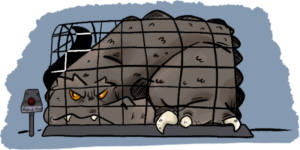
Fight and Flight responses are usually known as meltdowns. In self-defense we either fight the attacker or run away from it.
Flood and Fawn responses are a call for help, which I call ‘Hero Hunting’. Flood is a big emotional response where we might become a wailing snot monster to encourage others to come and protect us. Fawn is a people pleasing response, where we try to make the attacker happy in the hope that they’ll stop hurting us and protect us instead.
Flop and Freeze responses are usually known as shutdowns. We play dead so we are not of any interest to the attacker. Flop is where you can feel a meltdown inside, you show nothing on the outside, so your attacker won’t see you as a threat and will leave you alone. Freeze is where Dino Brain switches off your body, and sometimes your brain as well, so you become very still and of no interest to the attacker. You might even fall asleep, or find that you are awake but cannot move or respond.
Each person’s Dino Brain has access to the selection of all six responses. Sometimes, Dino Brain manages to choose a response that they feel is appropriate to the situation they are dealing with. However, you might have a Dino Brain that tends to activate one or two of the responses more than the others.
The process of a Meltdown: When Panic Monkey & Dino Brain try to help!
When Panic Monkey thinks it has seen a threat, it first raises it with the Air Traffic Controller, who, if things are going well, deals with the situation. They can either take appropriate action or reassure Panic Monkey that there is no threat and help them regulate and calm down.
However, if the threat is seen as too severe or the Air Traffic Controller is overloaded, highly stressed and struggling to deal with all the signals, Panic Monkey will try to help out – but it isn’t qualified so can get things wrong and make mistakes. Then the Air Traffic Controller will then have to focus on fixing Panic Monkey’s ‘help’ rather than their usual day to day operations. This will make things worse and overload will become overwhelm, leaving the Air Traffic Controller less able to function to do what it needs to. The longer it goes on, the harder this becomes!
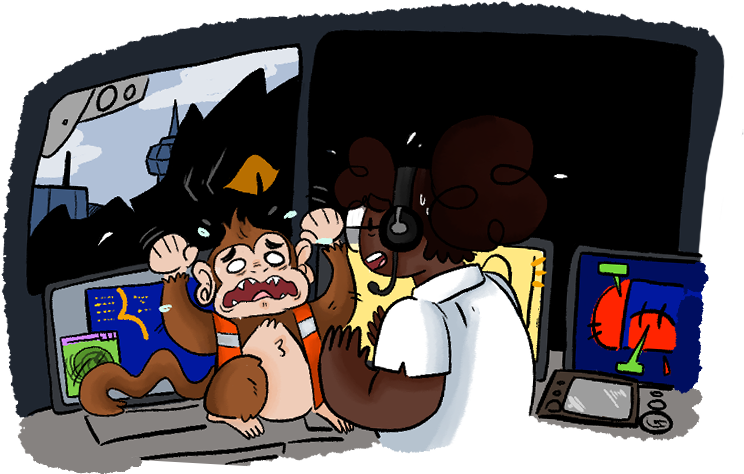
As an overwhelm progresses Panic Monkey feels less and less safe, so the Air Traffic Controller can now do nothing to stop it bouncing around the control room pushing buttons everywhere. We desperately need help at this point – preferably a trusted human to help us, so the pressure is taken off Panic Monkey!
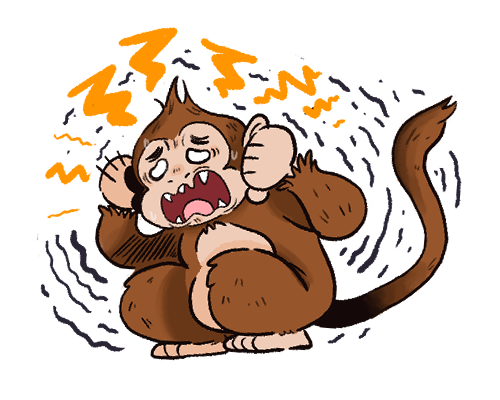
If nobody can help us, Panic Monkey wakes up Dino brain to take charge. Dino brain starts crashing around the control room – controls are getting broken now – senses start to go haywire, motor control can be hard to access, emotion chemicals start to flood our nervous system. Panic Monkey is now basically screaming ‘We are going to die!!!!’ over and over. We start acting in ways we don’t recognise as our Dino Brain starts to take over. The Air Traffic Controller is still hanging in there – but losing.
Then the meltdown hits – this is the point where Dino Brain has shoved the Air Traffic Controller out of the control room and locked the door. The Air Traffic Controller can see what is going on through the door but can do nothing to stop what happens next.

The ONLY decision Dino Brain can make is which protective mechanism to use – Fight, Flight, Flood, Fawn, Flop or Freeze.
It can choose a visible one – Fight, Flight or Flood, which are usually labelled as meltdowns. It can choose a more hidden or invisible one – Fawn, Flop or Freeze, which are usually labelled as shutdowns. The choice might depend on the situation, or it might be that your Dino Brain favours one option more often than others. (You can read more about shutdowns here if your Dino Brain favours those.)
When Panic Monkey finally decides that the crisis has been averted, and tells Dino brain we are safe and to step down, they let the Air Traffic Controller back in the room.
BUT there is often a huge aftermath:
- Dino is very strong so could have caused a lot of damage. Sometimes, It can take several days for you to get back to decent functioning levels.
- Panic Monkey is still jittery and on edge after this traumatic event of the meltdown – it may start remembering other past traumas and mistakes, and exaggerating them – it may also start seeing threat where it didn’t see it before.
If these meltdowns keep happening Panic Monkey learns, mistakenly, to link the real trauma of the meltdown to the events leading up to it. And, over time, repeated meltdowns keep reinforcing the belief of threat. The threat can then become so intense that Panic Monkey stops even talking to the Air Traffic Controller about the risk – it jumps straight to releasing Dino Brain without consulting the logical part of our brain.
Seeing things that may well be low-risk but responding to it as a life-threatening danger is a trauma response. And because Panic Monkey has stopped talking to the Air Traffic Controller about it, logic won’t address it. Only repeated safe experiences will start to reassure Panic Monkey it was wrong and there is no danger.
How can you reassure your Panic Monkey?
- In an overly busy environment, have a planned escape route to reassure Panic Monkey they can flee if the threat gets too great.
- Having protective gear like ear defenders, reassures Panic Monkey that dangerous levels of sensory input won’t get reached.
- Having autonomy to keep control of the situation allows Panic Monkey to feel secure that they won’t get forced into a dangerous situation.
Then every time Panic Monkey can exit or protect itself at the first sign of threat without having to call on Dino Brain, it relaxes a little more.
Meltdowns: Can we reduce Panic Monkey’s Workload?
Panic Monkey takes their Health and Safety job very seriously. There are a number of reasons why they might jump into action to try and help – ultimately ending in a Meltdown:
- If our senses are overloaded
- If our logic brain is overloaded with more than the Air Traffic Controller cope with processing
- If our energy levels get too low, and the Air Traffic Controller becomes too tired to work properly
- If something happens that feels unsafe – like getting in trouble or people shouting
- If we lose something we need that Panic Monkey believes usually keeps us safe, this registers as a survival threat
A lot of people don’t understand meltdowns and mistakenly call them tantrums. That’s because they don’t usually notice the threats that our enthusiastic Health and Safety Officer detects. Panic Monkey just tries really hard to keep us safe, but they don’t always know how to.
When our Panic Monkey gets active these things can happen to us:
- Anxiety or feelings of anger can increase
- Our ability to think clearly can decrease
- We can feel overwhelmed, muddled and confused
If we notice that we are starting to feel on edge and respond early enough, it can be possible to calm Panic Monkey down. We can go somewhere quiet and regulate by doing something we find calming. This is a way of letting Panic Monkey know you’re safe now and they’re allowed to take a tea break, whilst you deal with things yourself.
If we don’t notice or we can’t get somewhere quiet, then things generally get worse. Panic Monkey begins REALLY bouncing around the control room and calls in our Dino Brain (amygdala) to protect us. It can feel like there is a fight going on between our Air Traffic Controller and our Dino Brain about who gets to take over from Panic Monkey. The Air Traffic Controller might now only control half of our actions and about half the decisions are Dino Brain’s.
At this point, we may need someone else to help us get somewhere quieter, talk us through calming routines and persuade Panic Monkey the danger is over and that it’s now OK to take their tea break. It will take a lot longer to calm down in this instance.
If we don’t have anyone to help us and still can’t get away, then Panic Monkey most definitely won’t take a tea break and will let Dino Brain take full charge, completely locking out our Air Traffic Controller. We are then no longer in control at all – this is the time for Dino Brain to choose their defence response.
In an ideal world it would be great to avoid meltdowns altogether. In reality that isn’t always possible. What we can do though is spend time getting to know and understand what triggers Panic Monkey so we can prevent as much panic as possible.
Maybe your Panic Monkey is activated by some of these common triggers:
- Busy environments – with a lot going on, a threat could appear from anywhere, so Panic Monkey might try even harder to keep watch in order to protect you
- Going to sleep – if there isn’t anyone else to watch out for us or we don’t feel we are in a secure space, Panic Monkey will try to keep us awake so we can stay safe, not realising a house IS a safe space.
- Changes of plan – if the Air Traffic Controller hasn’t had a chance to check it over, and make sure the new plan’s safe, Panic Monkey will have no idea what threats there are with the new plan – so it imagines ALL the possible threats.
Here are some of the other pages on this website that might be useful for getting to know your own Panic Monkey, Air Traffic Controller and Dino Brain better and understanding their triggers.
- Senses – learn about your senses and ways to prevent sensory overload
- Logical processing – learn how your Air-traffic controller likes to work
- Managing your brain’s energy – learn how to not overwork your Air-traffic Controller
- Executive functioning – learn about the air traffic controller’s organisation skills
For ideas to try to calm your Panic Monkey and send them for their tea break, you could check out the coping kit page on the Childline website.

